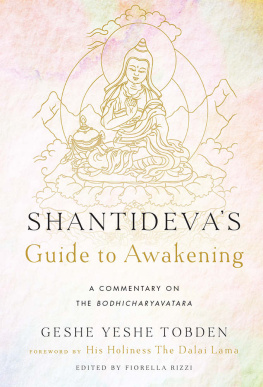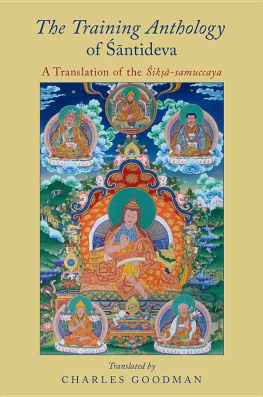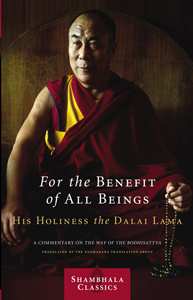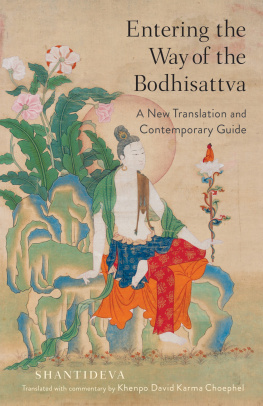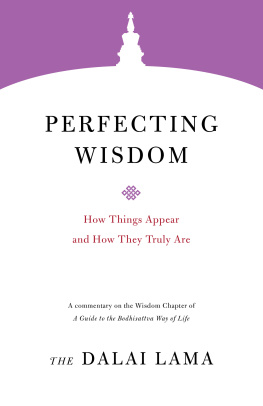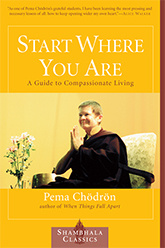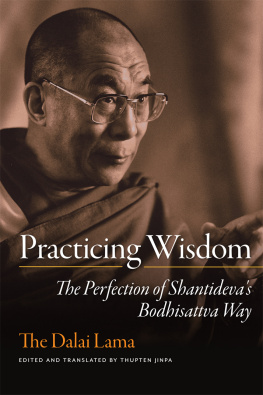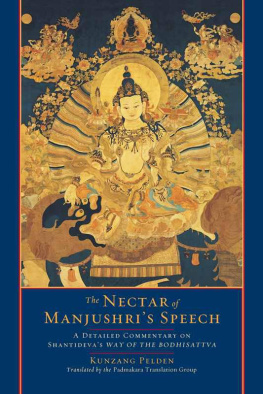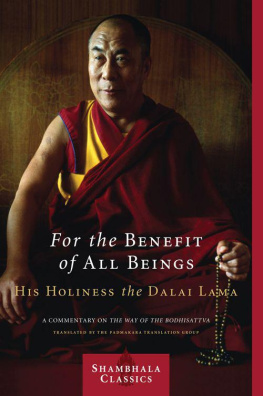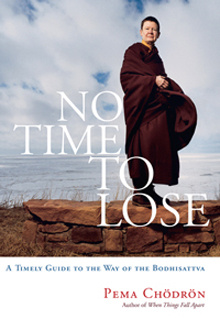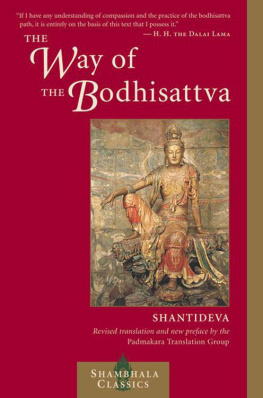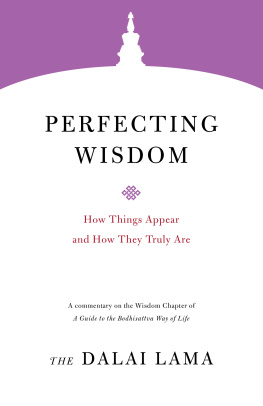
The most comprehensive modern commentary on Shantidevas master work.
Geshe Yeshe Tobden has that rare distinction not only of being qualified as a scholar but also of having spent many years in meditation in the mountains. As a result, his explanation has the special flavor of heartfelt personal experience.
HIS HOLINESS THE DALAI LAMA ,from his foreword
One of the great classics of Buddhist literature, the Bodhicharyavatara, or Way of the Bodhisattva, is required reading for understanding Tibetan Buddhism. Presented in the form of a personal meditation in verse, Shantideva, the seventh-century Buddhist master, outlines the path of the bodhisattvasthose who renounce the peace of their own liberation, vowing instead to attain enlightenment for the sake of all others. The Dalai Lama once remarked that his own understanding of the bodhisattva path is based entirely upon this text.
Expounded by an accomplished scholar and deeply realized meditator, Shantidevas Guide to Awakening is a resource for a lifetime of study. Chapter by chapter and verse by verse, Geshe Yeshe Tobden maps the Bodhicharyavatara in clear and insightful language, helping us to deepen our understanding of its teachings and apply them to our lives.
Geshe Yeshe Tobden has not only mastered the subjects of philosophy, logic, wisdom, metaphysics, and discipline, his presentation shows that he also has experiential understanding. His combination of knowledge and experience is greatly needed today.
GELEK RIMPOCHE, author of Good Life, Good Death
GESHE YESHE TOBDEN (192699) was born in Tibet and became a monk at age twelve. After the Chinese invasion of his homeland in 1959, he was arrested, but he escaped and spent two years crossing the Tibetan Plateau on foot until reaching the border with India. He spent several years teaching at the university in Varanasi. When he was forty-four, he told the Dalai Lama of his desire to live out his days in meditation retreat, for he deeply desired the realization of renunciation, bodhichitta, and emptiness. Released from his duties at the university, he remained in retreat apart from a few teaching tours abroad, notably to the fledgling Buddhist centers in Italy, where these teachings were delivered.
PUBLISHERS ACKNOWLEDGMENT
The publisher gratefully acknowledges the kind help of the Hershey Family Foundation in sponsoring the printing of this book, as well as Richard Gere and the Gere Foundation for sponsoring the translation.
TABLE OF CONTENTS

FOREWORD
T he Bodhicharyavatara was composed by the renowned Indian scholar Shantideva, who was accepted by all Buddhist schools in Tibet as one of the most reliable and inspiring of teachers. The book focuses mainly on cultivating and enhancing the awakening mind of bodhichitta, and as such, it is a Mahayana text. At the same time, Shantidevas philosophical viewpoint as revealed particularly in the ninth chapter on wisdom follows the Madhyamaka tradition of Chandrakirti.
The major emphasis of the book is on nurturing a mind wishing to benefit other sentient beings. In my life I have read this book and listened to explanations of it many times. I have thought deeply about the meaning it contains and have even had the good fortune on many occasions to teach it myself. Consequently, I have some experience of the advice contained here, and can confidently say that it continues to be relevant and useful today. If we sincerely try to put the core of these teachings into practice, we need have no hesitation about whether they will be effective. Cultivating qualities like love, compasion, and generosity not only benefits us on a personal level, it benefits all sentient beings and even helps maintain harmony with the environment. This is why I encourage people to observe such practices; its not merely so that the tradition may be preserved.
The present work contains a thorough, practical guide by Geshe Yeshe Tobden to the Bodhicharyavatara. He has that rare distinction not only of being qualified as a scholar but also of having gained long acquaintance through many years of meditation in the mountains. As a result his explanation of teachings such as these has the special flavor of heartfelt personal experience. I am delighted that this record of Geshe-las explanation is being published and offer my prayers that readers may be inspired to take it to heart for the greater peace and happiness of all sentient beings.

Tenzin Gyatso, The Fourteenth Dalai Lama
EDITORS PREFACE
T SEWANG RABTEN, destined to later become the master Geshe Yeshe Tobden, was born in 1926 to a family of wealthy farmers in Ngadra, a village one days walk south of the city of Lhasa. As a child, he lived with his father, Kelsang Tsering; his mother, Yangzom Bhuti; and his sister, Yeshe Tsomo.
One day a great lama who was visiting the area to give an initiation saw him and predicted that his life would be in danger unless he took monastic vows. So his mother, with the help of a cousin who lived in Lhasa, entrusted the twelve-year-old boy to the Venerable Damchoe of Sera Monastery. There Geshe-la began his monastic studies.
His mother died when he was eighteen, and Geshe-la always spoke of her with undying affection, explaining that he had been overwhelmed by a tremendous feeling of gratitude for all the love and attention she had given him. At the same time he spoke with regret for having been unable to repay her kindness while she was still alive. A year later his younger sister also died, and immediately after that his father passed away as well. Geshe-la was the only one left, and he did not hesitate to sell all his familys possessions and offer the proceeds to his monastery. Later on, so as not to be a burden on the Venerable Damchoe, who had helped him like a mother but who had other monks to take care of as well, Geshe-la decided to go and live alone in a small house near the monastery.
In those years Geshe-la was extremely poor; the door to his house had no lock, and there was nothing inside that anyone would want. Anything that he received from others he would share with the most needy, never keeping anything for the next day. Those who knew him recount that his immediate, spontaneous reaction after accepting a gift was to offer it enthusiastically to those who might enjoy it or have need of it, keeping for himself only a few indispensable items, as long as they were simple and unpretentious.
During this time he studied vigorously, receiving numerous teachings from great masters, among whom he remembered with special devotion Geshe Lodoe Sangpo and his own root guru, Chusang Rinpoche. A few years ago Chusang Rinpoches reincarnation was found in Tibet in the form of a young monk. The Dalai Lama recognized him at the age of twelve, and as a result, he later came to live in India.
With the Chinese invasion of 1959, Geshe-la was arrested and imprisoned near Lhasa but managed to escape after four months. He was caught, suffered two months of hardship in prison, and escaped again. On the road to India he was caught yet again by the Chinese, but he managed to escape to safety. He once recounted how he had kept a few
Next page
